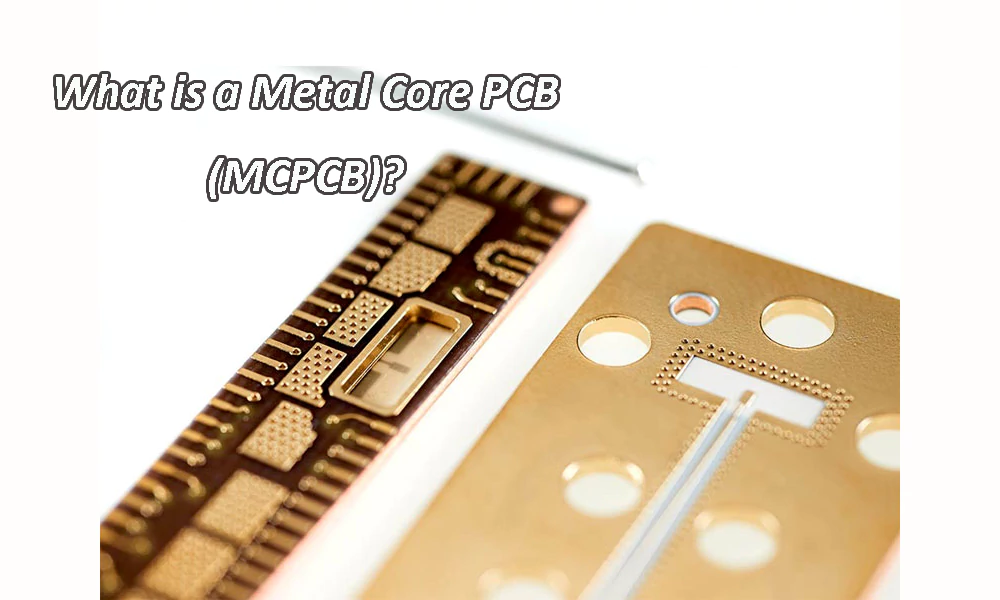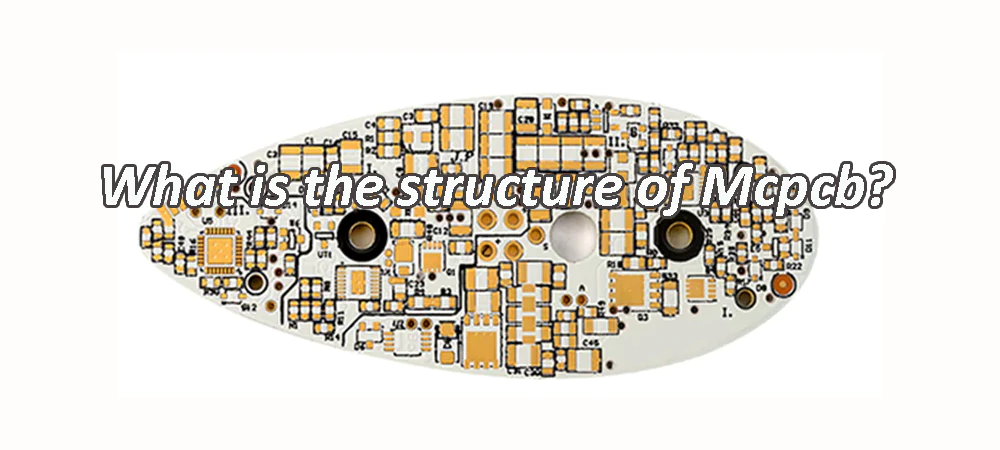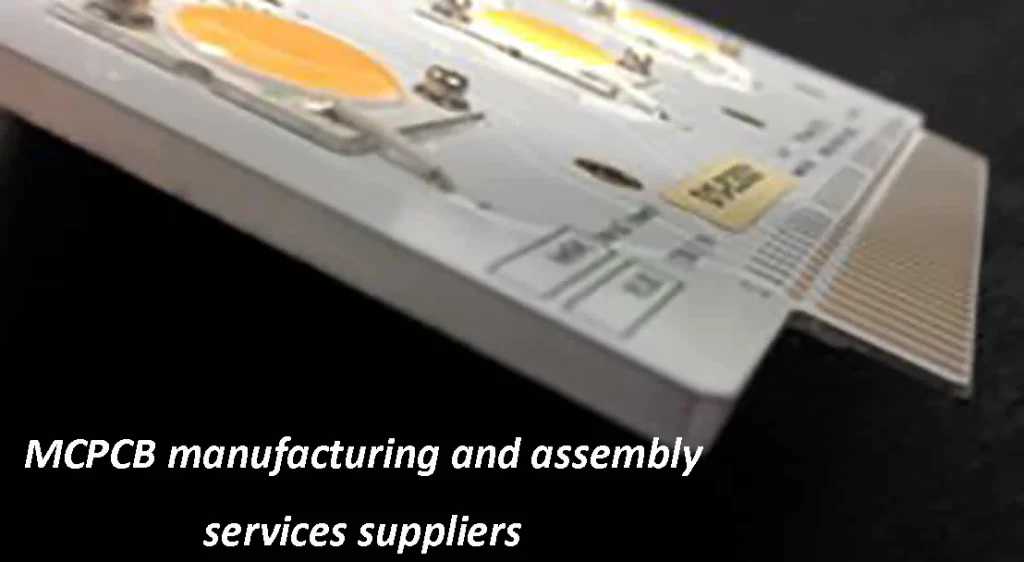In the world of electronics, efficient thermal management is a crucial factor in ensuring the reliability and performance of devices, especially in applications with high-power components. Metal Core Printed Circuit Board (MCPCB) has emerged as a specialized solution designed to address the thermal challenges faced by electronic systems. This article explores the advantages, applications, and design considerations of MCPCB, shedding light on their significance in various industries.
What are the different types of PCBs?
Printed Circuit Boards (PCBs) come in various types, each designed for specific applications and requirements. Here are some common types of PCBs:
Copper traces and components are only on one side of the board.
Used in simple electronic devices with fewer components.
Double-Sided PCBs:
Copper traces and components on both sides of the board.
Allows for more complex circuit designs.
Consist of three or more layers with insulating material between them.
Used in complex electronic devices with high component density.
Rigid PCBs:
Traditional and inflexible PCBs made of solid substrate material.
Common in most electronic devices.
Made of flexible plastic or polyimide substrate.
Can be bent or twisted to fit into unconventional shapes.
Ideal for applications with limited space or those requiring flexibility.
Combine features of both rigid and flexible PCBs.
Suitable for applications where a combination of flexibility and rigidity is needed.
High-Frequency PCBs:
Designed to handle high-frequency signals.
Commonly used in applications like RF (radio frequency) and microwave circuits.
Aluminum PCB (Metal Core PCB – MCPCB):
Feature a metal core (usually aluminum) for better thermal conductivity.
Often used in applications where effective heat dissipation is crucial, such as LED lighting.
Made of ceramic materials for excellent thermal and electrical properties.
Suitable for high-power applications and those requiring good thermal management.
HDI PCBs (High-Density Interconnect PCBs):
Have higher wiring density with microvias and finer lines and spaces.
Ideal for compact electronic devices where space is a critical factor.
Thick Copper PCBs:
Feature thicker copper layers for increased current-carrying capacity.
Used in applications with high power requirements.
RF PCBs (Radio Frequency PCBs):
Optimized for radio frequency signals.
Commonly found in wireless communication devices.
Power Supply PCBs:
Specifically designed for power supply applications.
Emphasize efficient power distribution and heat dissipation.
Backplane PCBs:
Used in large electronic systems to interconnect multiple PCBs.
Provide a backbone for data transmission.
What is a Metal Core PCB (MCPCB)?

A MCPCB is a type of printed circuit board that features a metal core as its substrate. Unlike traditional PCBs that use rigid materials like fiberglass or epoxy resin as the core, MCPCBs have a metal base, typically made of aluminum. The metal core serves as both a mechanical support and a heat sink, making MCPCB well-suited for applications requiring efficient heat dissipation.
What are the advantages of MCPCB?
MCPCB offers several advantages, especially in applications where efficient heat dissipation is crucial. Here are some key advantages of MCPCB:
• High Thermal Conductivity:
One of the primary advantages is the high thermal conductivity of the metal core, typically made of materials like aluminum.
Efficient heat dissipation is essential for electronic components, and MCPCB excels in this regard.
• Improved Heat Dissipation:
MCPCB effectively transfers heat away from electronic components, preventing overheating and ensuring optimal performance.
This makes MCPCB ideal for applications with high-power components, such as LEDs and power electronics.
• Enhanced Mechanical Strength:
The metal core provides additional mechanical strength to the PCB, making MCPCB more robust compared to traditional PCBs.
This enhanced strength is beneficial in applications where the board may be subjected to mechanical stress or vibrations.
• Lightweight Design:
Despite the metal core, MCPCB is often lightweight, making them suitable for applications where weight is a consideration.
What are the applications of metal core PCB?
Metal Core Printed Circuit Boards (MCPCBs) find applications in various industries where efficient heat dissipation and thermal management are critical. Here are some common applications of Metal Core PCB:
LED Lighting
Power Electronics
Automotive Electronics
Motor Drives
Aerospace Electronics
High-Power Amplifiers
Solar Inverters
Medical Devices
Communication Equipment
Industrial Power Supplies
Consumer Electronics
High-Performance Computing (HPC)
What is the structure of Mcpcb?

The structure of a MCPCB consists of several layers, each serving a specific purpose in providing the board with thermal conductivity, electrical insulation, and mechanical support. Here is the typical structure of an MCPCB:
Metal Core:
The base layer of an MCPCB is the metal core, which is usually made of aluminum due to its excellent thermal conductivity.
The metal core serves as a heat sink, efficiently dissipating heat generated by electronic components.
Dielectric Layer (Insulator):
Above the metal core, there is a dielectric layer, also known as the insulator or substrate.
The dielectric layer provides electrical insulation between the metal core and the conductive traces.
Copper Circuit Layer:
On top of the dielectric layer, there is a thin copper circuit layer.
The copper layer contains the conductive traces, which form the electrical connections between components on the PCB.
Solder Mask:
A solder mask is applied over the copper circuit layer to protect it from environmental factors, prevent short circuits, and define the locations for soldering components.
The solder mask is typically green, but other colors may be used for identification or aesthetic purposes.
Silkscreen Layer:
The silkscreen layer is printed on top of the solder mask and provides markings, labels, and component identifiers.
It includes information such as component outlines, reference designators, and logos.
The basic structure of an MCPCB is similar to that of a traditional printed circuit board, but with the key difference of having a metal core instead of a rigid substrate. The metal core enhances thermal conductivity and provides mechanical support, making MCPCB suitable for applications that require efficient heat dissipation.
It’s worth noting that the specific composition and thickness of each layer can vary based on the design requirements and intended application of the MCPCB. Additionally, more complex MCPCBs may involve multiple copper layers and additional insulating layers for high-density designs.

Is metal core PCB (MCPCB) the same as aluminum PCB?
Yes, a MCPCB is often referred to as an Aluminum PCB, but it’s important to note that the metal core in MCPCB is not limited to aluminum. While aluminum is a common choice for the metal core due to its good thermal conductivity, other metals such as copper can also be used based on specific application requirements.
In general, MCPCBs have a metal core layer, typically aluminum, that provides better heat dissipation compared to traditional PCBs. The metal core helps to transfer heat away from the components, making MCPCB suitable for applications where efficient thermal management is crucial, such as in high-power LED lighting.
So, while aluminum is a common metal core material, MCPCB may utilize other metals depending on the desired thermal performance and application specifications.
Design considerations about MCPCB
1. Core Material Selection:
Choose the metal core material based on thermal conductivity requirements. Aluminum is common for its balance of thermal performance and cost-effectiveness.
2. Thermal Considerations:
Optimize the design for thermal management, ensuring efficient heat transfer from electronic components to the metal core.
3. Copper Trace Design:
Design copper traces to handle required current and minimize electrical resistance. Consider power planes for improved thermal performance.
4. Component Placement:
Carefully place components to optimize thermal dissipation and ensure efficient use of space. Consider the thermal requirements of individual components.
MCPCB manufacturing and assembly services suppliers

Website: https://www.pcbcart.com/
PCBCart offers MCPCB fabrication and assembly services with a focus on high-quality production and quick turnaround times. They provide various options for metal core materials and assembly capabilities.
2. RUSH PCB:
Website: https://rushpcb.com/
RUSH PCB specializes in the manufacturing of MCPCB, including single-sided, double-sided, and multi-layer metal core boards. They offer prototype to production-level services.
3. King Sun PCB Technology Co., Ltd:
Website: https://kingsunpcba.com/
King Sun PCB is a professional MCPCB manufacturer with a comprehensive range of services, including prototype and mass production. They focus on providing high-quality thermal solutions.
4. WellPCB:
Website: https://www.wellpcb.com/
WellPCB is a PCB and MCPCB manufacturer with services ranging from prototyping to mass production. They offer competitive pricing and a user-friendly online quotation system.
5. MKTPCB:
Website: https://www.mktpcb.com/
MKTPCB specializes in MCPCB fabrication and assembly services, offering a range of options for metal core materials and thermal management solutions.
6. Advanced Circuits:
Website: https://www.4pcb.com/
Advanced Circuits is a well-established PCB manufacturer that provides MCPCB fabrication services. They offer quick-turn services and various metal core options.
7. PCBWay:
Website: https://www.pcbway.com/
PCBWay is a popular PCB manufacturer that also offers MCPCB fabrication and assembly services. They provide an online quotation system and a user-friendly interface.
8. RayMing Technology:
Website: https://www.raypcb.com/
RayMing Technology specializes in MCPCB manufacturing with a focus on quick turnaround times and high-quality production. They offer a variety of metal core options.
Conclusion
MCPCB represents a significant advancement in the realm of electronic circuit design, addressing the critical need for efficient heat dissipation. With their enhanced thermal conductivity and mechanical strength, MCPCBs have become integral in applications ranging from LED lighting to automotive electronics and high-power amplifiers. As electronic systems continue to evolve, the role of MCPCB in ensuring reliability and longevity becomes increasingly vital, solidifying their place as a key technology in modern electronics.
Single-Sided PCBs
Double-Sided PCBs
Multi-Layer PCBs
Rigid PCBs
Flexible PCBs (Flex PCBs)
Rigid-Flex PCBs
High-Frequency PCBs
Aluminum PCBs (Metal Core PCBs - MCPCBs)
Ceramic PCBs
HDI PCBs
Thick Copper PCBs
RF PCBs
...
LED Lighting
Power Electronics
Automotive Electronics
Motor Drives
Aerospace Electronics
High-Power Amplifiers
Solar Inverters
Medical Devices
Communication Equipment
Industrial Power Supplies
Consumer Electronics
High-Performance Computing (HPC)
Yes, a Metal Core PCB (MCPCB) is often referred to as an Aluminum PCB, but it's important to note that the metal core in MCPCBs is not limited to aluminum. While aluminum is a common choice for the metal core due to its good thermal conductivity, other metals such as copper can also be used based on specific application requirements.










